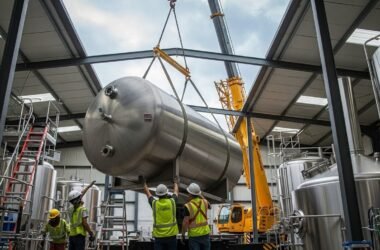Freezing temperatures can wreak havoc on systems and structures, causing damage that’s both costly and inconvenient. For operations involving water or sensitive materials, like residential plumbing or industrial pipelines, frozen pipes can grind productivity to a halt and lead to expensive repairs.
Fortunately, thermal solutions are available to prevent freezing and safeguard your systems, whether you’re preparing for harsh winters or improving operational resilience. This guide will walk you through practical thermal solutions, including the advantages of using a pipe heating system to keep everything running smoothly.
Why Freezing Prevention is Critical
Frozen pipes or systems don’t just result in temporary inconvenience; they can cause long-term damage that leads to costly downtime or repairs.
Here’s how freezing can affect your infrastructure or operations:
- Pipe Bursting:When water freezes, it expands and increases pressure, potentially causing pipes to rupture.
- System Failures:Vital operations reliant on fluid or material flow may completely shut down.
- Structural Damage:Ice buildup around infrastructure can jeopardize the integrity of buildings and operational facilities.
Implementing effective thermal solutions is essential—not just to keep systems operational but to save time, effort, and money in the long run.
Effective Thermal Solutions to Prevent Freezing
1. Insulation for Pipes and Systems
Proper insulation is the first line of defense against freezing. By covering exposed pipes and equipment with high-quality insulation materials, you can maintain warmer internal temperatures and reduce heat loss.
Best Practices for Insulation:
- Use foam, fiberglass, or rubber pipe insulation with the appropriate R-value based on your climate.
- Ensure a snug fit with no gaps, particularly around joints and fittings.
- Add additional layers for areas exposed to direct wind or severe cold.
2. Pipe Heating Systems
A pipe heating system is a reliable and efficient solution for preventing pipes from freezing in extremely cold conditions. These systems use heating cables or tapes that warm the surface of pipes, keeping liquids inside from freezing.
Key Benefits of a Pipe Heating System:
- Automatic Regulation:Many systems include built-in thermostats that monitor and adjust heating automatically.
- Ease of Installation:Self-regulating heating cables are easy to install around existing pipes.
- Versatility:Suitable for a range of materials, including metal and plastic pipes, and usable in residential, commercial, or industrial settings.
- Energy Efficiency:Advanced systems deliver heat only when needed, reducing energy consumption.
Pipe heating systems are particularly helpful for outdoor applications or unheated spaces, like basements or garages, ensuring optimal performance regardless of the external temperature.
3. Heat Trace Tape for Smaller Areas
For localized areas prone to freezing, heat trace tape offers a more small-scale solution. This flexible, self-adhesive tape can wrap around specific pipe sections to provide targeted warmth. It’s ideal for short, exposed sections of piping or compact installations where a full pipe heating system may not be necessary.
4. Heated Enclosures
For larger equipment or sensitive components, heated enclosures provide all-around thermal protection. They maintain a temperature-controlled environment by combining insulation with heating elements.
When to Use Heated Enclosures:
- Protecting sensitive valves, timers, or monitors.
- Covering outdoor water connections.
- When operating in regions with consistently sub-zero temperatures.
5. Regular Maintenance and Checks
Even the best thermal solutions require proper oversight. Regularly inspecting your equipment can prevent small issues from turning into disastrous failures amidst freezing weather.
Inspection Checklist:
- Confirm all pipes and heating systems are operational and free of damage.
- Test thermostats in pipe heating systems to ensure accurate functioning.
- Replace worn insulation or cables to maintain peak efficiency.
6. Emergency Preparedness Measures
Despite your best efforts, unforeseen circumstances can arise. For those moments, having emergency preparation systems in place ensures minimal disruption and faster recovery.
Tips for Emergency Prep:
- Store backup heaters or heat guns for rapid response to frozen sections.
- Keep an ample supply of insulation materials for last-minute wrapping.
- Install shutoff valves for quick control of water flow in case of pipe bursts.
Building Durability with Thermal Solutions
Preventing freezing in your pipes and systems is not just about avoiding temporary discomfort; it’s a proactive measure to safeguard long-term productivity and efficiency. By combining practical solutions like insulation, pipe heating systems, and regular maintenance, you can create reliable systems ready to handle even the harshest winters.
Investing in these preventive measures not only minimizes damage but also keeps systems running smoothly throughout the year, regardless of weather conditions.







